
Recently, I gave a presentation (via Zoom) for Stiftung Asienhaus. The title was “The False Promise of REDD+ in Southeast Asia”. I started the talk with an overview of the underlying driver of the ecological crisis: capitalism.
The following is a lightly edited version of that part of the talk.
One of the key problems of capitalism is economic growth. I really like this cartoon by Polyp (above), because it shows what happens when you criticise capitalism – someone will almost always say, “So, you have an entire economic system fully worked out, don’t you? Let’s just switch into that.”
Not long ago I mentioned in a post on REDD-Monitor that the global economic system is the major cause of deforestation and environmental degradation.
“Any evidence that Cuba or North Korea protect their environment better than the average?” came the response.
So to be clear, I’m not recommending that we all move to Cuba or North Korea, or that we stay where we are but adopt either Cuba’s or North Korea’s economic and political system.
I am pointing out that perpetual economic growth on a finite planet is impossible. Capitalism is driving us to disaster.
Economic growth is a fundamental part of capitalism. Economic growth is basically what we get under the capitalist system. And we’ve seen in recent years that if economic growth slows down, governments and central banks will do anything to get it going again.
This slide illustrates how central banks react when economic growth slows. The graph shows the amount of quantitative easing between 2008 and 2020. Quantitative easing amounts to central banks printing money. (OK, I know, they are buying bonds issued by commercial banks, but as Ben Bernanke pointed out in 2009, it’s basically printing money.)
Looking at 2008 on the graph above, we can see the massive amount of money that the European Central Bank, the Federal Reserve, and the Bank of Japan pumped into the economy back then. At the time, the trillions of dollars to bail out the banks seemed like absolutely unimaginable amounts of money.
Quantitative easing carried on until about 2018, completely dwarfing what happened in 2008. And with the coronavirus crisis, the central banks have gone completely ballistic. They’ve thrown way more money at the problem than after the 2008 financial crisis.
One response to the perpetual growth problem is to paint growth green. The UN environment programme, for example, has a section on its website on the “green economy”. It looks lovely. There’s a windmill, there are fields of beautiful sunflowers. As long as growth is “sustainable”, what’s the problem?
In 2019, Jason Hickel and Giorgos Kallis published a paper asking the question “Is Green Growth Possible?” Their conclusion is that “green growth is likely to be a misguided objective and that policymakers need to look toward alternative strategies”.
As a way of illustrating this, a sustainable level of resource use involves digging up about 50 billion tons per year of materials. (That figure includes biomass, so it’s not all being dug out of the ground.) We passed that figure in the year 2000.
In 2007, we hit 100 billion tons per year.
By 2050, we are likely to hit 180 billion tons per year.
This graph is from a 2012 report written by a team of researchers led by Monika Dittrich and published by the Heinrich Böll Foundation. Everything from 2008 is a forecast, but we can see that so far we’re pretty much following what the researchers predicted. Except that it’s happening faster than the researchers expected.
There have been several studies that pretty much replicate the findings of this report. One of these is a 2017 report by the UN environment programme – the organisation that is happily promoting the green economy as the solution to this problem on its website.
UNEP’s report ran a scenario to see how much material would be extracted with a US$573 price on carbon, a resource extraction tax, and rapid technological innovation. The result was 132 billion tons per year by 2050. The result of all these madly optimistic assumptions was well over 2.5 times the sustainable rate of resource extraction.
With a growth rate of 3%, which doesn’t sound like very much, the global economy doubles every 24 years. Which means vast amounts of waste, vast amounts of pollution, vast amounts of environmental destruction. And after 24 years, it doesn’t stop. It doubles again. And then again. And again.
Capitalism is driving us to disaster. Unless economic growth stops, we face catastrophe.
This is the context in which REDD operates. REDD does not even attempt to keep fossil fuels in the ground. On the contrary, it actively encourages the continued extraction of fossil fuels – without polluting companies, there is no one to buy the carbon credits. REDD, like all carbon trading mechanisms, is a way of allowing Big Oil and other extractive industries to continue drilling.


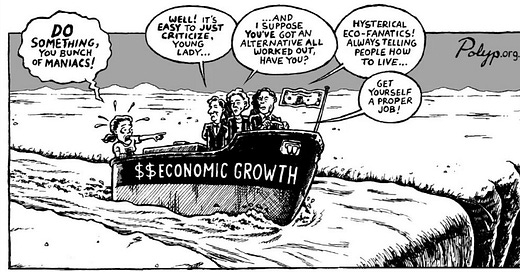


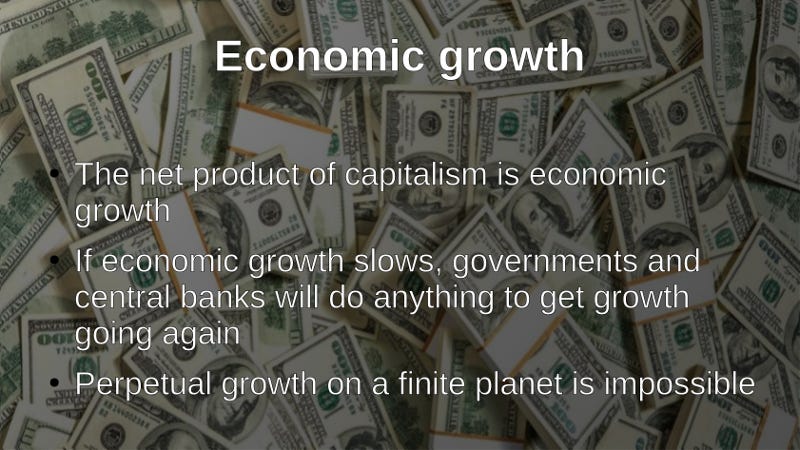

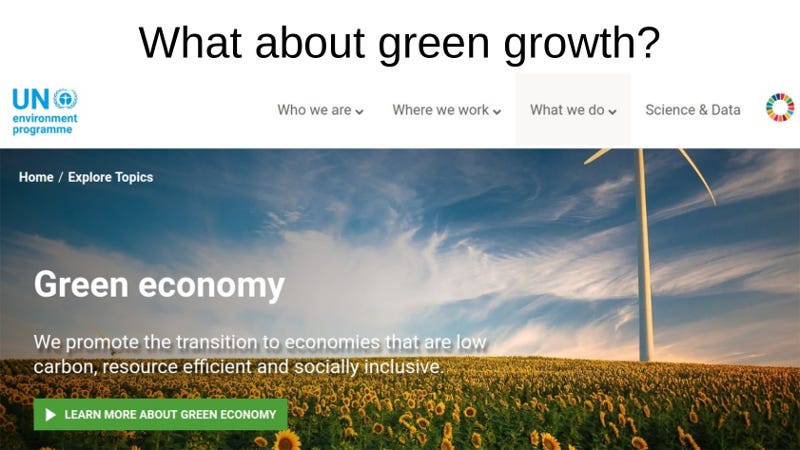
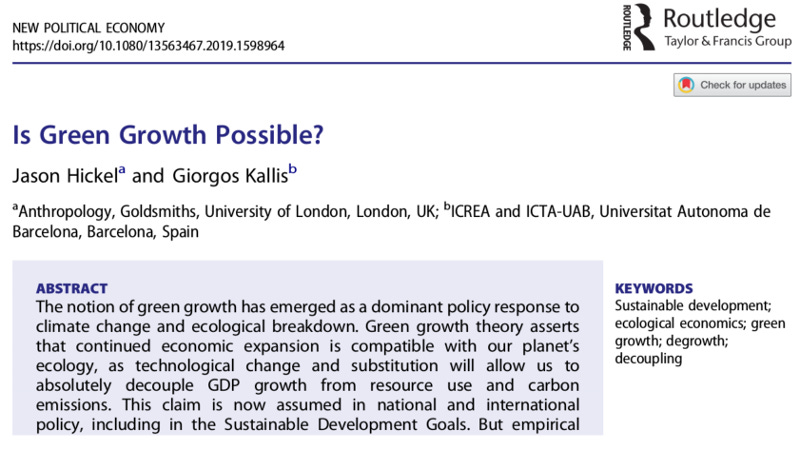



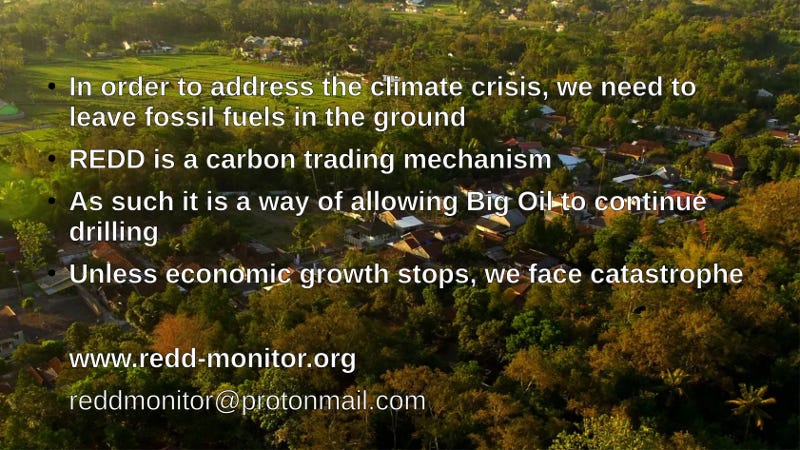
Good one Chris!
'Capitalism is driving us to disaster. Unless economic growth stops, we face catastrophe.'
Degrowth is the answer. All true. Trouble is, you have to convince the capitalist-roaders, including the Chinese, who are still busy 'catching up'. Chances of de-growth being 'adopted' as the 'rational choice'? Not great, I fear. Degrowth will kick in eventually, driven by the effects of global warming, but by then it will be far too late. I hope I'm wrong!
Grumpy old doomster (GOD)